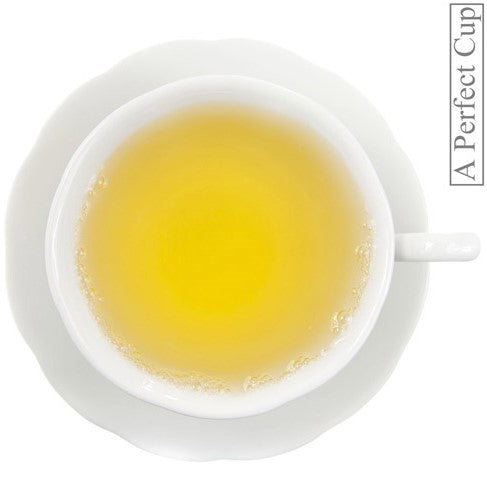Collection: Green, White & Oolong
Green tea is the most widely consumed tea in China and Japan, distinguishable from delicate white teas, and semi-oxidized Oolongs.
Green tea is characterized by a light flavor that varies widely based on production method. This tea is withered after plucking, and is then heated to stop oxidization and preserve the natural green leaf. Green tea may be floral, nutty, smoky or grassy depending on the part of the tea bush used, and the production method followed.
White tea is the least processed of all teas. After plucking, the tea is withered and dried, with minimal processing to avoid bruising the leaves. Delicate and light, the full leaf or bud is often plain to the eye when the tea is dry and when infused.
Oolong tea is a semi-oxidized tea. Some oolongs are short-oxidized, sharing the features of green teas. Others are long-oxidized, and may be almost black, providing a more robust cup. A long oxidized Taiwanese tea, and some Darjeeling black teas can be close in appearance and taste.
All tea comes from the Camellia Sinensis plant, which has two main varietals: Camellia Sinensis Sinensis, and Camellia Sinensis Assamica. Like wine, which is fermented from two main grapes, tea comes in thousands of different forms and qualities, based on growing region, growing altitude, and processing. Like fine wines, green teas range from fruity Japanese Hysons, to smoky Chinese gunpowder greens. White tea comes in a wide variety of flavors and characteristics, from delicate, peach like silver needle teas, to peaceful Pai Mu Tans. Oolong teas range from creamy Milk Oolongs to the robust Iron Goddess of Mercy. Green, white and Oolong teas should be infused at 80 degrees celcius.
Tea is processed into five main varieties: white, green, Oolong, Black, and Dark tea (Pu-Erh). Other varieties, such as Yellow and Purple tea can also be found. Herbal "teas", which are made from a variety of herbs and flowers are not true teas, but are known as Tisanes.
-
Jasmine with Flowers
Regular price From $7.95 CADRegular priceUnit price / per -
Organic Lucky Dragon Hyson
Regular price From $7.95 CADRegular priceUnit price / per -
Blueberry Pie
Regular price From $7.95 CADRegular priceUnit price / per -
Pai Mu Tan White Tea
Regular price From $7.95 CADRegular priceUnit price / per -
Milk Oolong
Regular price From $12.00 CADRegular priceUnit price / per -
Silver Needle
Regular price From $15.00 CADRegular priceUnit price / per -
Ti Kuan Yin Iron Goddess of Mercy Oolong
Regular price From $7.95 CADRegular priceUnit price / per -
Japanese Genmaicha Yamasaki
Regular price From $7.95 CADRegular priceUnit price / per -
Crime of Passion
Regular price From $7.95 CADRegular priceUnit price / per -
Dragon Pearls
Regular price From $20.00 CADRegular priceUnit price / per -
Maple French Toast Oolong
Regular price From $8.45 CADRegular priceUnit price / per




















